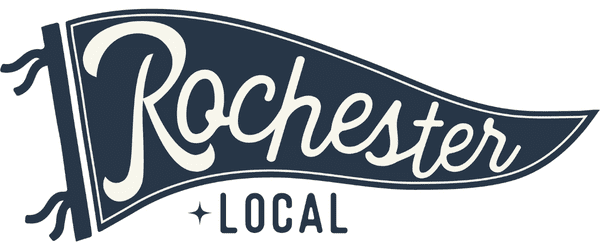 Rochester Mom is starting a brand new resource series called Give Five. The idea of Give Five is simple. We are inviting you to Give Five minutes to read through each of these posts. The series will provide you with ideas, resources, lists, and suggestions on specific topics. We acknowledge that giving five minutes is just the start…a small step in a bigger journey we can all take to become allies to our BIPOC friends, family, and neighbors.
Rochester Mom is starting a brand new resource series called Give Five. The idea of Give Five is simple. We are inviting you to Give Five minutes to read through each of these posts. The series will provide you with ideas, resources, lists, and suggestions on specific topics. We acknowledge that giving five minutes is just the start…a small step in a bigger journey we can all take to become allies to our BIPOC friends, family, and neighbors.
This series is intended to be a resource for YOU and your families. Topics will vary but all will be helpful as we work towards anti-racism and expand and diversify our understanding of race and diversity. Some resources will be collaborative with Rochester Mom writers, and for others, we’ll look to YOU! We want to know what you have learned on your own journeys and what resources have helped you along the way. Our goal with this series is to be a conduit of information: pulling together resources to help one another. We are learning ourselves and it’s been a challenging yet beautiful process. Will you join us?
Maybe in the last year, you’ve started to see some of these words and phrases used more often in social media and conventional media, but aren’t completely sure what they mean. We’ve broken down some of the more common terms and phrases, and included links and resources to help diversify your vocabulary.
Anti-Racism
The dictionary defines it as being “opposed to racism.” Ibram X Kendi, author of the popular book How To Be an Antiracist defines it as “One who is supporting an antiracist policy through their actions or expressing an antiracist idea.” He goes on to say that “An antiracist idea is any idea that suggests the racial groups are equals in all their apparent differences.”
BIPOC
Acronym for: Black, Indigenous, and People of Color. For more on the history of the term, click here.
White Supremacy
The belief that the white race is inherently superior to other races and that white people should have control over people of other races. Also, the social, economic, and political systems that collectively enable white people to maintain power over people of other races.
Implicit Bias or Unconscious Bias
A bias or prejudice that is present but not consciously held or recognized. Check out Simply Psychology for more.
Microaggressions
These are the thinly veiled, everyday instances of racism, homophobia, sexism, (and more) that you see in the world. Sometimes it’s an insult, other times it’s an errant comment or gesture. For more, click here.
Systemic Racism
Also known as structural or institutional racism. NAACP President Derrick Johnson defines systemic racism as “the systems and structures that have procedures or processes that disadvantages African Americans.” To read more, click here.
Race Gap
Refers to the disparities between differing ethnic/racial groups. For more specifics: The Race Gap and Inequality.org.
Equity vs Equality
Equality means each individual or group of people is given the same resources or opportunities. Equity recognizes that each person has different circumstances and allocates the exact resources and opportunities needed to reach an equal outcome.
Red Lining
The illegal practice of refusing to offer credit or insurance in a particular community on a discriminatory basis (as because of the race or ethnicity of its residents). To learn more, click here.
Intersectionality
The complex, cumulative way in which the effects of multiple forms of discrimination (such as racism, sexism, and classism) combine, overlap, or intersection especially in the experiences of marginalized individuals or groups.
White Guilt
The guilt brought upon by “the recognition of unearned and unfair racial privileges, the acknowledgment of personal racist attitudes or behavior, and/or the sense of responsibility for others’ racist attitudes or behavior.” For more, click here.
Radical Empathy
To consider another person’s opinion even if their opinion is extremely opposite of your own. This is done to connect more deeply with the person. It enables us to see and understand another person’s point of view. It promotes tolerance, thoughtfulness and kindness.
Other Sources:
Merriam-Webster Dictionary





